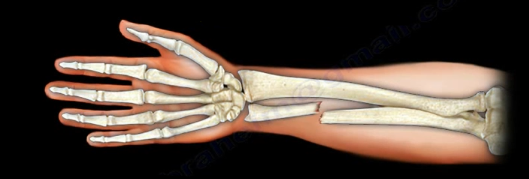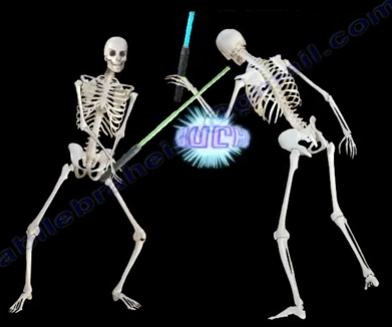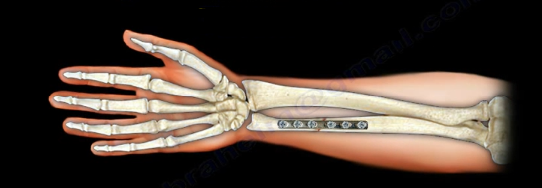
A nightstick fracture is a fracture resulting from a direct blow to the ulnar shaft. It is an isolated fracture of the middle third of the ulna. The ulna is superficial and lies subcutaneously under the skin.
This injury is commonly caused when a victim raises their arm to protect themselves against trauma to the head. The forearm is used to block the blows from an oncoming offending bar or stick. Because the ulna is subcutaneous and due to its position in front of the attacker, it breaks easily when hit. Normally, the radius and ulna lie parallel to each other when the forearm is supinated (the palm is up). However, during pronation, the palm is down and the radius crosses the ulna; presenting itself in front of the attacker.

The clinical presentation for this fracture is localized swelling and pain. Two orthogonal views at 90 degree angles from each other are needed to appreciate the true degree of displacement of the fracture. For a minimally displaced fracture, treatment varies from the use of an ace bandage to plaster immobilization or a functional brace. The fracture usually heals, but there may be some concern related to nonuniuon and malunion. Displaced fractures with more than 50% displacement or angulation more than 10° are treated by surgery. Angulation or displacement towards the interosseous membrane is poorly tolerated. Usually, surgery involves plate fixation and early range of motion. This treatment allows better alignment, a stable fixation, and better healing of the fracture, as well as early return of function.

